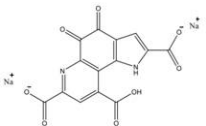
On April 23, 2023, China National Center for Food Safety Risk Assessment (CFSA) issued a public consultation on the following four new food raw materials passing the technical review of the CFSA Expert Review Committee:
- peach gum,
- tiger nut,
- Leuconostoc mesenteroides subsp. Cremoris and
- Pyrroloquinoline quinone disodium (PQQ) salt.
The deadline for public comments is May 23, 2023. Details are as follows:
Peach gum
Name | Peach gum | |
Basic information | Source: Prunus persica (L.) Batsch | |
Brief introduction of the production process | Prepared through picking, sorting, airing, cleaning, drying, and other processes by using the gum secreted from Prunus persica (L.) Batsch. | |
Quality requirements | Moisture, g/100 g | ≤ 15 |
Ash, g/100 g | ≤ 2 | |
Crude polysaccharide, g/100 g | ≥ 60 | |
Recommended intake | ≤30 g/day | |
Other information |
| |
Pb, mg/kg | ≤ 0.5 | |
As, mg/kg | ≤ 0.5 | |
Ochratoxin A, μg/kg | ≤ 5.0 | |
Coliforms, CFU/g | ≤ 100 | |
Mould and Yeast, CFU/g | ≤ 150 | |
Staphylococcus aureus, /25g | 0 | |
Salmonella, /25g | 0 | |
Tiger nut
Name | Tiger nut | ||
Basic information | Source: Cyperus esculentus L. var. sativus Boeck. Edible part: stem tubers | ||
Quality requirements | Protein, g/100 g | ≥ 5.0 | |
Fat, g/100 g | ≥ 12.0 | ||
Starch, g/100 g | ≥ 27.0 | ||
Moisture, g/100 g | ≤ 12.0 | ||
Dietary fiber, g/100 g | ≥ 10.0 | ||
Ash, g/100 g | ≤ 3.0 | ||
Fatty acids composition (in % of total fatty acids) | Oleic acid C18:1 | ≥ 55.0 | |
Linoleic acid C18:2 | ≥ 6.0 | ||
Palmitic acid C16:0 | ≥ 10.0 | ||
Other information | Food safety indicators shall comply with the current national food safety standard for nuts and seeds. | ||
Leuconostoc mesenteroides subsp. cremoris
Name | Leuconostoc mesenteroides subsp. cremoris | |
Other information |
| |
Pb, (based on dry weight), mg/kg | ≤ 1.0 | |
As, (based on dry weight), mg/kg | ≤ 1.5 | |
Salmonella, /25g (mL) | 0 | |
Staphylococcus aureus, /25g (mL) | 0 | |
Listeria monocytogenes, /25g (mL) | 0 | |
Pyrroloquinoline quinone disodium (PQQ) salt
Name | Pyrroloquinoline quinone disodium (PQQ) salt | |
Basic information | Source: Prunus persica (L.) Batsch CAS: 122628-50-6 Molecular formula: C14H4N2Na2O8 Molecular weight: 374.17 Structure: | |
Brief introduction of the production process | Preparing through fermentation, extraction, purification, crystallization, drying, and other processes by using the Methylovorus glucosotrophus as a production strain. | |
Recommended intake | ≤20 mg/day | |
Quality requirements | Property: | Reddish brown powder |
Pyrroloquinoline quinone disodium (PQQ) salt content (based on dry weight), g/100 g | ≥ 98.0 | |
Moisture, g/100 g | ≤ 12.0 | |
Other information | 1. Application scope and maximum usage: beverages (40 mg/kg, solid beverages are converted according to the mass of liquid after preparation). 2. Not suitable for consumption by infants, young children, pregnant women and breastfeeding women. This should be indicated on the labels and instructions with consumption limits.
4. Food safety indicators must meet the following requirements: | |
Pb, mg/kg | ≤ 0.5 | |
As, mg/kg | ≤ 1.0 | |
Cd, mg/kg | ≤ 0.1 | |
Hg, mg/kg | ≤ 0.1 | |
Total plate count, CFU/g | ≤ 1000 | |
Coliforms, MPN/g | ≤ 3.0 | |
Mould and Yeast, CFU/g | ≤ 100 | |
Staphylococcus aureus, /25g | 0 | |
Salmonella, /25g | 0 | |
If you need any assistance or have any questions, please get in touch with us via service@cirs-group.com.
For official info please click:


